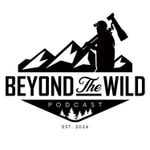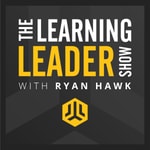Beyond the Wild – Details, episodes & analysis
Podcast details
Technical and general information from the podcast's RSS feed.

Beyond the Wild
Beyond the Wild Crew
Frequency: 1 episode/9d. Total Eps: 53

Great photos are made by being in the right place at the right time … and having the right equipment. Beyond the Wild dives deeper into the strategies that are necessary to improve the odds of capturing amazing footage of wildlife and their iconic behaviour.
Recent rankings
Latest chart positions across Apple Podcasts and Spotify rankings.
Apple Podcasts
🇨🇦 Canada - visualArts
09/07/2025#97🇨🇦 Canada - visualArts
08/07/2025#72🇨🇦 Canada - visualArts
07/07/2025#36🇨🇦 Canada - visualArts
06/07/2025#22🇨🇦 Canada - visualArts
05/07/2025#32🇨🇦 Canada - visualArts
04/07/2025#16🇨🇦 Canada - visualArts
01/07/2025#90🇨🇦 Canada - visualArts
30/06/2025#63🇨🇦 Canada - visualArts
29/06/2025#41🇨🇦 Canada - visualArts
28/06/2025#26
Spotify
No recent rankings available
Shared links between episodes and podcasts
Links found in episode descriptions and other podcasts that share them.
See all- https://www.instagram.com/p
11467 shares
- https://www.instagram.com/sethmacey
280 shares
- http://Pictureline.com
25 shares
- http://Podcast.To
4 shares
RSS feed quality and score
Technical evaluation of the podcast's RSS feed quality and structure.
See allScore global : 68%
Publication history
Monthly episode publishing history over the past years.
Episode 19
Season 1 · Episode 19
jeudi 19 septembre 2024 • Duration 01:10:11
In this pro-tip podcast episode, host Ron Hayes teases the rest of the beyond the wild crew with his freshly delivered Canon EOS R5 Mark II camera. The discussion quickly dives into the new camera’s top features, and Ron already has some learnings with the Mark II including tips on selecting the best battery grip option. As Pro-Tips episode go, Jason Loftus, Mark Raycroft and Ron Hayes show up overloaded with tips on all aspects of photography. Half the battle with wildlife photography is getting to the ideal location and travel is a necessity and a pain. The BTW crew has travelled a lot to distant locations and they have some good tips and tricks to limit the pain of travel and help you arrive primed for the adventure ahead. They also delve into tips about extending CF Express card longevity, gear organization, and a plethora of ideas on how to be prepared for capture the perfect shot.
Takeaways
The R5 Mark II camera has new features like a battery grip and active cooling, which can enhance the shooting experience.
The Angelbird CF Express card reader doesn't heat up the cards like other readers, potentially extending their lifespan.
Checking for lower rates on car rentals and internet providers closer to the trip date can save money.
Existing customers should periodically review their plans with providers to ensure they are getting the best rates and features. Use travel cards to accumulate points and miles for free or discounted travel
Organize your gear in the field to easily identify fresh batteries and empty memory cards
Study animal behavior to anticipate and capture unique shots
Take time to enjoy the moment and appreciate the beauty of nature
Build relationships with fellow photographers and enjoy the camaraderie
Shoot a variety of subjects, including the ones you don't necessarily want to shoot, to improve skills and open up new opportunities
Pursue your individual passions and celebrate personal successes in the photography journey
Sound Bites
"Sporting a brand new Beyond the Wild toque"
"Evaluate what your needs are for a vertical grip"
"The Angelbird CF Express reader doesn't heat up the cards"
"Be disciplined with it. Pay it off every month. As many expenses as you can put on there because you're gaining points and miles."
"Shoot the things you don't want to shoot."
"Just stop and take it in and refresh yourself."
Chapters
01:00 Introduction and Overview
03:54 New Gear: Beyond the Wild Toque
09:30 Exploring the Features of the R5 Mark II Camera
22:33 Keep Your CF Express Cards Cool with the Angelbird Reader
26:04 Save Money by Checking for Lower Rates on Car Rentals and Internet Providers
31:17 Maximizing Travel Benefits
35:08 Organizing Gear in the Field
45:21 Studying Animal Behavior
53:37 Enjoying the Moment and Building Relationships
57:04 Shooting a Variety of Subjects
01:04:00 Pursuing Individual Passions
Thanks for listening to another episode of Beyond the Wild Podcast.To see more of our show and to watch the hosts, as well as the photos and videos that they discuss, tune into their Beyond the Wild Podcast YouTube channel.
Make sure to subscribe to be notified of upcoming episodes for your listening and viewing enjoyment!
Beyond the Wild Podcast is sponsored by Pictureline.com and Canon USA.
Episode 18
Season 1 · Episode 18
jeudi 12 septembre 2024 • Duration 01:10:11
In this conversation, Ron Hayes and Jason Loftus discuss their first impressions of the Canon R5 Mark II camera. They highlight the improvements in design, ergonomics, and functionality, detailing the redesigned grip, and the addition of a pre-record feature to the video mode. They also discuss the new focusing system, write speeds, dynamic range and video capabilities. The conversation segues into answering listener questions, including a discussion about food prep for backcountry trips, the team’s thoughts on where to best podcast platforms for the show and lenses for Alaska and the pros and cons. The crew ends the episode by answering a great question, “What is everyone’s bucket list destination.” Of course, the team goes into great detail, so you’ll get various perspectives in this episode.
Listener Questions
@FairFXMike
What do you do on back-country trips for food prep?
@KurtVHummel
Should listeners listen to the podcasts or watch the video podcasts on YouTube?
@AndrewStevensonPhoto
Give some tips on lenses to carry for Alaska, especially the one Jason went on to photograph the fishing bears. Do you carry both lenses on a strap or a Cotton Carrier-like device? Or pack in a bag and unpack it for every encounter?
@JamesEvansPhotography
What is everyone’s bucket list destination?
Takeaways
The Canon R5 Mark II camera has several improvements in design, ergonomics, and functionality.
The camera features a redesigned grip and a pre-record feature, as well as faster focus and write speed.
The dynamic range and video capabilities of the camera have also been improved.
For backcountry trips, freeze-dried meals and portable cooking equipment are popular options. Using a gravity-fed water filter system is an efficient way to filter water in the backcountry.
Power bars, protein bars, and freeze-dried fruit are lightweight and convenient food options for camping.
Adding flavor to water with juice squeeze boxes can make it more enjoyable to drink and provide electrolytes.
Listeners can choose to listen to the podcast on their preferred platform, whether it's audio or video.
Interacting with and sharing the podcast helps support its growth and sustainability.
When carrying lenses for wildlife photography in Alaska, it's important to consider personal preferences and shooting styles.
Options for carrying lenses include using straps, a cotton carrier-like device, or a backpack.
Bucket list destinations for wildlife photography include Denali National Park, the Pantanal for Jaguars, Pumas in Chile, and various locations in Africa and Antarctica.
Sound Bites
"Canon R5 Mark II. We've been waiting so long."
"It feels more substantial."
"Now they've made it so that electronic shutter, those are actually adjusted speeds."
"The gravity fed from one of those bags to the second, it's fairly efficient too."
"Power bars and protein bars, there's so many different options."
"You can get these little flavored juice squeeze boxes, and it's just to squeeze a couple squirts into the Nalgene."
Chapters
01:00 Introduction and First Impressions
02:05 Design and Ergonomics
03:27 Improved Electronic Shutter
04:24 Pre-Record Feature
10:18 Enhanced Focus System
18:20 Positive Feedback for the Canon R5 Mark II
21:24 Pro Tip for Backcountry Trips
33:57 Water Filters and Food Options
34:58 Choosing the Right Platform
43:52 Best Lenses for Wildlife Photography
57:41 Bucket List Destinations
Thanks for listening to another episode of Beyond the Wild Podcast.To see more of our show and to watch the hosts, as well as the photos and videos that they discuss, tune into their Beyond the Wild Podcast YouTube channel.
Make sure to subscribe to be notified of upcoming episodes for your listening and viewing enjoyment!
Beyond the Wild Podcast is sponsored by Pictureline.com and Canon USA.
Episode 9
Season 1 · Episode 9
jeudi 6 juin 2024 • Duration 59:46
Summary
In this episode, Ron Hayes and Jason Loftus are joined by guest Nehemiah Ray, and they share discussions of how venturing into the wild in their childhood has developed a strong appreciation for the finer details in nature. Nehemiah Ray, a wildlife professional, shares his philosophy for raising his children to appreciate the wonders of nature. This episode digs into the importance of family, outdoor experiences, wildlife biology, and the impact of human behaviour on ecosystems. Nehemiah Ray shares his experiences with nature, wildlife removal, and the importance of teaching children to appreciate and respect the natural world. The conversation covers a wide range of topics related to nature, wildlife, and exploring the natural world. It delves into the impact of invasive species, the importance of understanding wild edible plants, the value of foraging, and the significance of being aware of one's environment. The conversation also highlights the benefits of spending time in nature, the challenges today’s technology has on kids, how it limits their opportunity for outdoor experiences and the influence of childhood experiences on adult perspectives.
Takeaways
Teaching children to appreciate and respect nature is important for their development.
Human behavior, including the release of pets into the wild, can have significant consequences for ecosystems.
Wildlife removal and the coexistence of humans and wildlife is a complex and important aspect of environmental management. Understanding the impact of invasive species on ecosystems
The value of learning about wild edible plants and foraging
The importance of environmental awareness and spending time in nature
The impact of childhood experiences on adult perspectives
How technology is limiting today’s youth from having outdoor experiences
Sound Bites
"It's not about not being afraid. It's about being able to overcome it."
"The impact on the ecosystem, you know, just by people releasing pets is significant."
"Don't keep a pet that should be wild. And secondly, don't ever turn them loose. There's always other options. But if you go turn them loose, then the ecosystem is dealing with a problem that you didn't want to manage. So."
"The grocery stores have such a small amount of foods that we eat. And granted, I know shelf life and all those types of things play a part into it, but I really want to teach them at a young age to be explorative. Don't just go with what's offered to you."
"It's really easy to admire the mountains. It's a lot more difficult to admire the molehill. Being able to ... You don't have to go far. You don't have to take a trip to Yellowstone, which, I mean, that's on the bucket list for me. I really want to go there."
Chapters
00:00 Introduction and Family Conversations
02:00 Outdoor Adventures and Wildlife Removal
05:25 Wildlife Biology and Environmental Stewardship
25:08 Human Behavior and Ecosystem Impact
28:22 Understanding Invasive Species and Ecosystem Impact
31:39 Exploring Wild Edible Plants and Foraging
34:36 Appreciating the Natural World: Mountains and Molehills
Thanks for listening to another episode of Beyond the Wild Podcast.
To see more of our show and to watch the hosts, as well as the photos and videos that they discuss, tune into their Beyond the Wild Podcast YouTube channel.
Make sure to subscribe to be notified of upcoming episodes for your listening and viewing enjoyment!
Beyond the Wild Podcast is sponsored by Pictureline.com and Canon USA.
Episode 8
Season 1 · Episode 8
jeudi 23 mai 2024 • Duration 01:15:35
Summary
In this episode, Ron Hayes, Jason Loftus, and Mark Raycroft are joined by guest Tim Irvin, a guide who refers to his adventures more as expeditions than trips. The the main topic of this episode is coastal wolves and guest Tim Irvin shares his passion for these elusive creatures and his experiences photographing them in the Great Bear Rainforest along with another rare creature, the spirit bear. The discussion highlights the challenges of finding and capturing images of coastal wolves in their natural habitat, as well as the excitement and awe of encountering them in the wild. The conversation explores the unpredictability and excitement of wildlife photography and guiding in the Great Bear Rainforest. Tim emphasizes the importance of patience and accepting the unknown when it comes to encountering animals in their natural habitat. He shares stories of close encounters with wolves and the emotional impact of being in the presence of these magnificent creatures. The conversation also touches on the changes in the spirit bear population and the cultural experiences available on the trips, providing a well-rounded and immersive experience for guests.
The hosts discuss the benefits of mirrorless cameras in shortening the learning curve and improving photography skills. They also acknowledge the overwhelming volume of images that can be captured with modern cameras and the need for efficient culling and editing processes. The conversation touches on the use of AI software to assist in image selection and the potential for third-party lens manufacturers to create lenses for the Canon RF mount. The hosts also discuss the advancements in camera technology and the importance of patience and preparation in wildlife photography. They conclude by highlighting the joy and satisfaction that comes from capturing great images and the importance of enjoying the moment in nature.
Takeaways
• The hosts have a deep appreciation for nature and wildlife, particularly birds and salamanders.
• The solar eclipse is a fascinating event that affects the behavior of animals.
• Coastal wolves in the Great Bear Rainforest are elusive and challenging to photograph, but the experience of encountering them in the wild is awe-inspiring.
• Capturing images of coastal wolves requires patience, dedication, and a deep understanding of their behavior and habitat.
• The hosts and guest share a love for adventure and exploring the natural world. Patience and acceptance of the unknown are key in wildlife photography and guiding
• Close encounters with wildlife can be emotionally powerful and exhilarating
• The population of spirit bears in the Great Bear Rainforest is dynamic and can fluctuate over time
• Trips to the Great Bear Rainforest offer opportunities to learn about and experience the culture of the indigenous people
• Mirrorless cameras have improved the photography experience by providing better light sensitivity and exposure control Mirrorless cameras have shortened the learning curve and improved photography skills.
• Managing a large volume of images can be overwhelming, but efficient culling and editing processes are essential.
• AI software can assist in image selection and save time in the editing workflow.
• Third-party lens manufacturers are creating lenses for the Canon RF mount, expanding options for photographers.
• Camera technology continues to advance rapidly, improving low-light capabilities and reducing noise.
• Patience and preparation are key in wildlife photography, and enjoying the moment is just as important as capturing great images.
Sound Bites
• "I just stuck my head out the door before the podcast and heard one of my favorite sounds of spring."
• "This dude can dance."
• "It's the family groove."
• "There's a certain amount of mystery there. What's more captivating than an unsolved crime?"
• "It's emotional, isn't it?"
• "Patience is being productive"
• "Mirrorless cameras shorten the learning curve and improve photography skills."
• "Mirrorless cameras are making photography easier, but managing the volume of images can be a challenge."
• "AI software can help in selecting the best photos and save time in the editing process."
Chapters
00:00 Introduction and Love for Nature
09:53 Tim’s Ongoing Education in Conservation Ecology
35:24 Encountering Coastal Wolves in the Great Bear Rainforest
52:56 Emotional Encounters
01:09:06 Cultural Experiences
01:20:11 The Impact of Mirrorless Cameras
01:35:24 Advancements in Camera Technology
Episode 7 (Special Episode)
Season 1 · Episode 7
vendredi 17 mai 2024 • Duration 01:15:35
Summary
Scott Stone, a bear viewing guide in Alaska, discusses the unique bear viewing experience in Katmai National Park. He explains the advantages of staying in a camp rather than doing day trips, including the opportunity for better lighting and more time on the ground with the bears. Scott also highlights the safety measures and permits required for bear viewing trips. He shares stories of close encounters with bears and the challenges of flying in unpredictable weather conditions. Scott announces a giveaway in partnership with Beyond the Wild podcast, where one lucky winner will have the chance to join a bear-viewing camp experience.
Scott Stone also discusses the importance of patience in wildlife photography and bear-viewing trips. He emphasizes that flight services in Alaska are dedicated to ensuring a successful experience for visitors and that waiting is sometimes necessary. The conversation then shifts to the upcoming wolf trips and the unique experience they offer. Scott explains that while the success rate may be lower compared to bear trips, the focus is on observing and photographing wolves in their natural habitat. He also highlights the importance of patience and the potential for incredible interactions with wolves. The hosts and Scott discuss the rewards of getting to know individual bears and the privilege of witnessing their life cycles. They also touch on the risks and rewards of wilderness adventures and the therapeutic nature of being in the present moment in the wild. The conversation concludes with a reminder to enter the giveaway for a chance to experience a bear-viewing trip in Alaska.
GIVEAWAY DETAILS
Scott and Jackie Stone are eager to show their appreciation to all the wonderful people who’ve supported them. And what better way to do it than by sharing a once-in-a-lifetime experience at the Alaska bear viewing camp with a lucky winner! Beyond the Wild Podcast is thrilled to team up with @sstone_images and @heatherschoice for an exclusive opportunity — a free trip for a 4 day/3 night Katmai bear camp in June/July of 2024 or 2025 (subject to limited space availability in 2024 camps).
To enter: Comment anything you’d like on Scott’s giveaway announcement post and make sure you are following our pages:
@beyondthewildpodcast
@sstone_images
@heatherschoice
For an additional entry, share this post in your stories and make sure you tag us so that we can see it (or screenshot and send it to @sstone_images if your page is private)! The winner will be selected on Friday, May 24th, at 5 pm AKST. Don’t miss your chance to win a free bear camp trip and join us for the adventure of a lifetime!
Good luck and enjoy the episode.
Takeaways
Staying in a bear viewing camp in Katmai National Park allows for better lighting and more time on the ground with the bears.
Safety measures and permits are essential for bear viewing trips, and it is important to choose a guide with the necessary qualifications.
Flying in Alaska can be challenging due to unpredictable weather conditions, but experienced pilots, and advanced instruments ensure safety.
Scott Stone is partnering with Beyond the Wild podcast for a giveaway, offering one lucky winner the opportunity to join a bear-viewing camp experience. Patience is key when it comes to wildlife photography and bear viewing trips.
Flight services in Alaska are dedicated to ensuring a successful experience for visitors.
Wolf trips offer a unique experience focused on observing and photographing wolves in their natural habitat.
Getting to know individual bears and witnessing their life cycles is a privilege.
Wilderness adventures come with risks, but they also offer therapeutic and rewarding experiences.
Being in the present moment in the wild can be transformative.
Don't miss the opportunity to enter the giveaway for a chance to experience a bear-viewing trip in Alaska.
Sound Bites
"Katmai is where it's at, once you've seen Katmai, everything else is second place."
"The bear gods and the bear world will always reward your patience."
"We're gonna make this an annual thing and we're super pumped that we get to do this with you guys."
"Waiting is sometimes what we have to do."
"If you want that thing looking straight down the barrel of your lens, like we had an amazing, amazing trip in 21."
"Wolf trips take more patience. If you're not a patient person, it's going to be hard for you."
Chapters
00:00 Introduction and Puffin Call Challenge
07:55 Introducing Scott Stone and Bear Viewing Camps
15:08 Advantages of Bear Viewing Camps
27:24 Flying in Alaska: Challenges and Safety Precautions
29:17 Giveaway Announcement: Join a Bear Viewing Camp Experience
41:22 The Importance of Patience
45:13 The Unique Experience of Wolf Trips
50:01 Getting to Know Individual Bears
56:48 The Risks and Rewards of Wilderness Adventures
01:09:55 The Therapeutic Nature of Being in the Present Moment
01:14:29 Enter the Giveaway
Thanks for listening to another episode of Beyond the Wild Podcast.
To see more of our show and to watch the hosts, as well as the photos and videos that they discuss, tune into their Beyond the Wild Podcast YouTube channel.
Make sure to subscribe to be notified of upcoming episodes for your listening and viewing enjoyment!
Beyond the Wild Podcast is sponsored by Pictureline.com and Canon USA.
Episode 6
Season 1 · Episode 6
jeudi 9 mai 2024 • Duration 01:42:17
Summary
In this episode, the crew is joined by guest Cole Waltner as they recount their adventure to Churchill, Manitoba, targeting Polar Bears in a unique Autumn setting. The group talks about the timing of the trip and the unique opportunities it provided. They also discuss the logistics of traveling to Churchill, including the smaller planes and limited carry-on space. The conversation ends with a discussion about packing gear and the precautions they took to ensure its safety. The conversation in this segment revolves around the experiences of the photographers during their trip to Churchill. They discuss the challenges of traveling with camera gear, the excitement of arriving in Churchill, and the incredible sightings of polar bears and the Northern Lights. They also touch on the importance of checking camera settings and the disappointment of shooting in JPEG instead of RAW. Overall, the segment highlights the unique and awe-inspiring moments they encountered during their trip. The conversation in this part focuses on the experiences and encounters with polar bears and beluga whales in Churchill. The group discusses the behavior and habits of polar bears, including their presence along the coast and their hunting patterns. They also talk about the beluga whales and their curious nature. The conversation highlights the excitement and joy of being in close proximity to these animals and the opportunities to capture amazing photographs and videos. The guides are praised for their knowledge and expertise in ensuring the safety of the group while providing memorable wildlife encounters. The conversation revolves around the experiences and encounters during a trip to Churchill, Manitoba. The participants discuss the behavior of polar bears, the beauty of fall colors, and the unique wildlife sightings they had. They also highlight the importance of respecting the animals and prioritizing their welfare over getting the perfect shot. The trip was filled with incredible experiences and opportunities for photography and videography. The participants express their gratitude for the trip and the chance to share their experiences with others.
Keywords
Churchill, Manitoba, polar bears, fall colors, trip, timing, logistics, packing gear, traveling, camera gear, backpack sponsor, F-stop, ICU units, flying, gate, Churchill, September, day one, experience, Aurora, JPEG, RAW, GoPros, smartphones, time-lapse, reflections, sleep deprivation, day length, polar bears, sightings, Northern Lights, polar bears, beluga whales, Churchill, hunting patterns, behavior, encounters, photography, guides, safety, Churchill, Manitoba, polar bears, fall colors, wildlife sightings, photography, videography, respecting animals, welfare, experiences
Takeaways
Churchill, Manitoba is a popular destination for photographing polar bears and experiencing the fall colors.
The timing of the trip in September allowed for unique opportunities to capture polar bears and fall foliage.
Traveling to Churchill involves smaller planes and limited carry-on space, requiring careful packing and gate checking of camera gear.
Taking precautions such as wrapping gear in clothing and watching it being loaded onto the plane can help ensure its safety during travel. Traveling with camera gear can be challenging, especially when it comes to finding a suitable backpack and checking camera settings.
Arriving in Churchill is an exciting experience, and the photographers wasted no time in exploring and photographing the wildlife.
The sightings of polar bears and the Northern Lights were the highlights of the trip, providing unique and awe-inspiring photo opportunities.
It's important to double-check camera settings, especially when renting or using new equipment, to avoid shooting in the wrong format.
Using GoPros and smartphones can also capture memorable moments, such as time-lapses and light painting.
The photographers experienced sleep deprivation due to the long daylight hours and late-night Aurora shoots.
The trip lasted four full days, during which they saw and photographed seven polar bears. Polar bears congregate in Churchill waiting for the ice to form so they can hunt seals.
The freshwater rivers in Churchill freeze earlier than the saltwater, allowing bears to hunt sooner.
Beluga whales are curious and often approach boats, providing opportunities for close encounters.
The guides prioritize safety while allowing for unique wildlife experiences.
The group had the chance to photograph polar bears, beluga whales, and other wildlife in their natural habitats. Respect the animals and prioritize their welfare over getting the perfect shot
The trip to Churchill, Manitoba offered unique wildlife sightings and opportunities for photography and videography
The participants had incredible experiences and encounters with polar bears and witnessed the beauty of fall colors
The trip was a reminder of the importance of experiencing and appreciating nature
Titles
Packing Gear for a Safe and Successful Trip
Timing is Key: September Trip for Unique Opportunities Four Days of Polar Bear Sightings
Excitement of Arriving in Churchill The Curiosity of Beluga Whales
Capturing Amazing Wildlife Moments Prioritizing Animal Welfare in Wildlife Photography
Experiencing the Beauty of Fall Colors in Churchill, Manitoba
Sound Bites
"We went to Churchill, Manitoba. And of course, the target species for that trip was polar bears."
"The timing for me was the combination of aurora borealis and fall colors."
"The smaller charter plane from Winnipeg to Churchill doesn't allow for the same size of carry-on that we're used to on the bigger jets."
"We still don't have a backpack sponsor yet, but the F-stop interesting that they have these ICU units of varying sizes you can get inside the pack."
"When you get there, what happens? What's day one like? What's going on? What is the experience when you arrive in Churchill in, sorry, what week in September?"
"Here's that. But hey, a second bang, it was worth the cost."
"We took the Zodiac out with the belugas, which... I didn't even think of whales when we go, you know, when Ron says, 'Hey, let's go shoot polar bears.'"
"They're just super curious and very interesting animals. The way they look, they actually turn their head, which is a unique behavior for them."
"All I needed was two more steps and this bear would have been just exactly on the other side of this still water pool would have been a perfect reflection."
"Hehehehe"
"This sucker is completely ignoring us"
"That art of care was pretty cool"
Chapters
00:00 Introduction and Technical Difficulties
09:06 Destination: Churchill, Manitoba
28:49 Challenges of Traveling with Camera Gear
36:24 Importance of Checking Camera Settings
46:01 Capturing Moments with GoPros and Smartphones
56:36 Guides Ensuring Safety and Memorable Experiences
01:16:34 Introduction and Ignored by a Polar Bear
01:26:26 Reflecting on the Trip and Future Plans
Episode 5
Season 1 · Episode 5
jeudi 25 avril 2024 • Duration 01:27:36
SummaryIn this episode, the hosts engage in small talk before introducing their guest, Dawn Wilson. Dawn shares her recent trip to Peru, where she went on a riverboat tour along the Amazon River and photographed various wildlife, including birds, primates, and caimans. She also discusses her upcoming trip to Belize, where she expects to encounter diverse species of birds, reptiles, and primates. The conversation covers various topics related to the Amazon rainforest, including climate and weather, humidity, wildlife sightings, daily routines on the boat, interactions with local communities, daylight hours, photography experiences, simplicity and happiness in remote communities, the Iditarod race in Nome, Alaska, life in Nome, and upcoming trips to photograph bald eagles, Rocky Mountain National Park, and the Galapagos Islands. In this conversation, Dawn Wilson discusses her experiences with night photography and wildlife encounters. She shares tips for capturing the Milky Way and emphasizes the importance of planning and timing for successful night photography. Dawn also highlights the unique sensory experience of being in the dark and encountering wildlife. She recommends essential equipment and apps for night photography and discusses the benefits of using wide-angle lenses. The conversation concludes with updates on the Beyond the Wild podcast and upcoming photography trips.
Takeaways
Dawn Wilson's recent trip to Peru involved a riverboat tour along the Amazon River, where she photographed a wide range of wildlife.
She saw various species of birds, primates, and caimans during her trip.
Dawn's upcoming trip to Belize is expected to offer similar opportunities to photograph diverse species of birds, reptiles, and primates.
Experiencing the natural world firsthand and sharing those experiences with others is a valuable and fulfilling aspect of wildlife photography. The Amazon rainforest experiences climate change, with variations in rainfall and temperature.
Humidity in the Amazon can be high, but it feels different from other humid environments.
Wildlife sightings in the Amazon can vary, with some days having abundant sightings and others requiring more time and patience.
The daily routine on the boat includes multiple photography and birding sessions, meals, and opportunities to interact with local communities.
Visiting remote communities can provide insights into different cultures and ways of life.
The Iditarod race in Nome, Alaska is a challenging and historic event that showcases the endurance and teamwork of mushers and sled dogs.
Life in Nome, Alaska is characterized by its remoteness, gold mining heritage, and unique wildlife opportunities.
Upcoming trips include photographing bald eagles, exploring Rocky Mountain National Park, and visiting the Galapagos Islands. Night photography requires specific equipment, including a camera with a bulb setting, a remote shutter release, and a tripod.
Timing is crucial for capturing the Milky Way, with the best times being the week before and after the new moon.
Night photography provides a unique sensory experience, allowing photographers to hear and feel their surroundings in a different way.
Encountering wildlife in the dark can be both thrilling and challenging, requiring photographers to be aware of their surroundings and respect the animals' space.
Chapters
00:00 Introduction and Small Talk
03:01 Dawn Wilson's Trip to Peru
07:16 Dawn Wilson's Trip to Belize
25:44 Humidity in the Amazon
26:51 Variability of Wildlife Sightings
28:30 Daily Routine on the Boat
31:26 Interactions with Local Communities
32:07 Daylight Hours in the Amazon
33:06 Photography Goals and Experiences
36:13 Simplicity and Happiness in Remote Communities
39:23 Exploring Different Cultures
46:11 The Iditarod Race in Nome, Alaska
50:11 Life in Nome, Alaska
56:31 Upcoming Trips: Bald Eagles, Rocky Mountain National Park, and Galapagos
58:10 Night Photography and Wildlife Encounters
59:26 Night Sky Photography and Dark Sky Designation
59:59 Photographing the Milky Way
01:01:07 Moon Phase and Wildlife Encounters
01:02:03 Night Photography and Sensory Experience
01:03:19 Wildlife Encounters in the Dark
01:04:26 Unexpected Wildlife Encounters
01:07:05 Night Photography Tips
01:10:13 Enhanced Senses in the Dark
01:12:07 Essential Equipment for Night Photography
01:14:03 Best Time for Night Photography
01:17:32 Viewing and Photographing the Milky Way
01:19:18 Night Photography Apps and Tools
01:22:24 Recommended Lenses for Night Photography
01:23:46 Night Photography Equipment and Techniques
01:24:28 Diverse Photography Opportunities
01:26:27 Beyond the Wild Podcast Updates
Episode 4
Season 1 · Episode 4
jeudi 11 avril 2024 • Duration 01:19:00
In this episode, your hosts of Beyond the Wild Podcast, Ron Hayes, Jason Loftus, and Mark Raycroft, share and discuss some of their most important tips for capturing their best-selling wildlife photography and the key gear and tools that helped make the image. The team discusses their editing workflows and the time spent refining each image. They mentioned the partnership between Canon and PictureLine and expressed the importance of partnering with a great camera shop like Pictureline to test and supply new gear. Oh, and they joke about Jason's extensive gear collection. This episode covers various camera gear topics, including using the Nikon 800mm f6.3 lens, its minimum focal distance, and the advantages of telephoto zoom lenses. The hosts also discuss their anticipation for Canon's new R1 camera and the benefits of shooting in 8K video. Mark recommends using a small flexible camera tripod with your smartphone to capture fantastic timelapse videos. The team share pro tips on adjusting camera settings and being aware of thermals and vehicle heat. Various aspects of wildlife photography, including image quality, the value of tours, the importance of being prepared, the impact of outerwear on photography, ISO preferences, the role of denoise software, the workflow of image processing, the advancements in post-processing software, the impact of editing on image quality, the versatility of GoPro cameras, and tips for filming with GoPro cameras are ALL discussed.
Episode 3
Season 1 · Episode 3
jeudi 28 mars 2024 • Duration 01:02:31
In this episode, your hosts Jason Loftus and Ron Hayes discuss their recent workshop in Yellowstone with co-host Mark Raycroft. Jason also dives into his epic experiences camping with coastal brown bears in the Alaskan wilderness. They share highlights and takeaways from the workshops, including unique encounters with wildlife.
Jason, Ron, and Mark also discuss the importance of habitat and ecosystem for bears and the different approaches to gear selection for wildlife photography.
Jason goes shares the details about the logistics and gear used for the Alaska trip and share stories about the behavior and personalities of the bears that he and his friends on the expedition encountered.
Jason also mentions upcoming trips to Africa and Costa Rica.
The hosts discuss upcoming wildlife photography opportunities, including Ron’s springtime Loon photo tours, Mark’s photo tours to photograph Musk Ox herds in the amazing northern landscape of Nunavik, Canada, Mark’s Elk Rut photo tours, as well as his popular Caribou photo tours in Newfoundlands, Canada.
Your Beyond the Wild Podcast hosts also discuss the excitement surrounding the Northern Lights and the potential for capturing unique images.
The hosts share their plans for the year, including Ron’s upcoming trip to Minnesota to photograph loons and projects focused on sage grouse and iconic landmarks.
This episode of the Beyond the Wild Podcast also covers the anticipated camera releases in 2024 and emphasize the importance of investing in experiences and using available gear to capture memorable moments.
Episode 2
Season 1 · Episode 2
jeudi 14 mars 2024 • Duration 01:26:42









